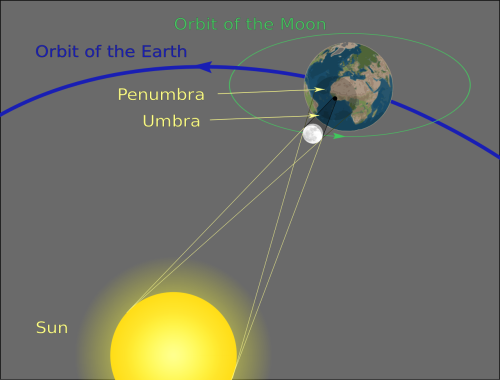Partial solar eclipse
Thursday 23rd Oct 201420:58
|
The Sun will be eclipsed by the Moon. This happens when the Sun, Moon and Earth are aligned in an almost exactly On this occasion, however, the alignment will not be very exact, and while the Moreover, the eclipse will only be visible from certain parts of the world |
The globe above shows the path of the Moon’s shadow across the Earth during the
eclipse. The shaded region within the red contour shows all of the places where
the Moon covers any part of the Sun’s disk. Within this, white contours show
where the Moon covers 20%, 40%, 60% and 80% of the Sun. The central white dot
shows places where the Moon covers more than 98% of the Sun.
The map below shows a projection of the Moon’s shadow onto a map of the world,
with the same contours marked.
The eclipse will be best seen from the following countries: Canada (Sun 75% covered), United States (Sun 65% covered), Russia (Sun 50% covered) and Mexico (Sun 30% covered).
From the UK, the eclipse will be not visible as the Sun will be below the horizon at the time. For detailed information about other locations, see In-The-Sky.org.
The map below shows contours of the maximum extent of the eclipse across the world.

The charts and text above were taken from In-The-Sky.org.

